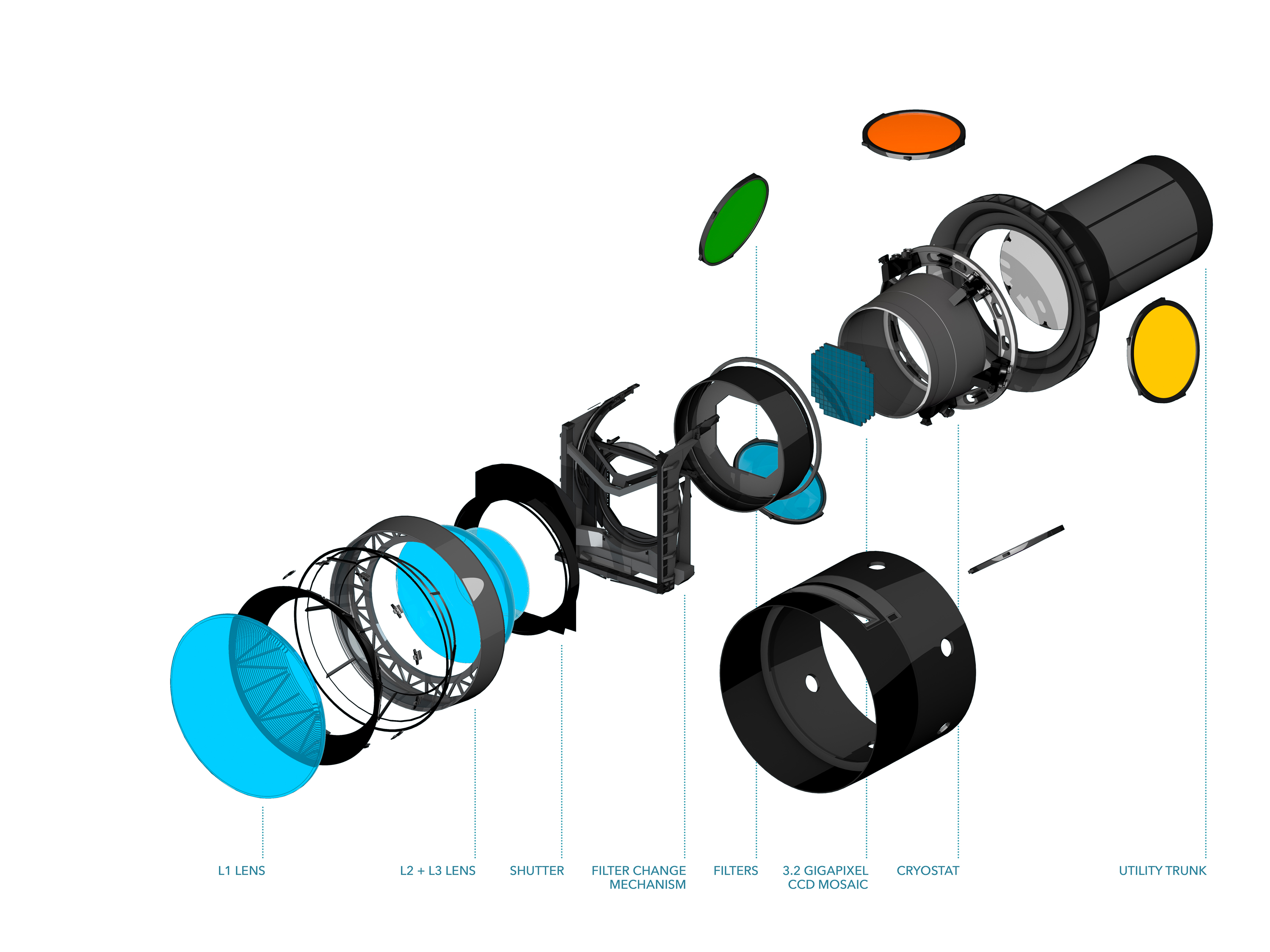October 19, 2021 - The last of the six Rubin Observatory LSST Camera filters arrived at SLAC National Accelerator Laboratory in September, an event that marked the completion of the major camera components and the end of years of work by engineers at Lawrence Livermore National Laboratory (LLNL), who designed and managed the fabrication of the camera’s lenses and filters.
The LSST Camera has three lenses that will focus and direct light from space to the camera’s focal plane. The largest of these lenses, measuring 5.1 feet (1.57 meters) in diameter, was recently added to the Guinness Worlds Records—it’s the largest lens in the world! This lens and its two companion lenses, at 3.94 ft (1.2 m) and 2.4 ft (.72 m), were completed and shipped from LLNL to SLAC in 2019.
The six LSST Camera filters, labeled u, g, r, i, z, and y, are some of the largest optical filters ever produced, and will be used by Rubin Observatory to capture images of the sky in six bands of the electromagnetic spectrum, ranging from the near ultraviolet to the near-infrared. Each filter is about 30 in (76 cm) in diameter, and weighs about 90 lbs (41 kg). An automated filter exchange system, which was built at IN2P3 in France and shipped to SLAC in 2020, will rotate and switch out the filters in the camera during observations.
With the delivery of the last filter to SLAC, the LSST Camera Major Item of Equipment (MIE) project was formally closed. That’s an exciting milestone for Rubin Observatory; it means that these optical components are ready to be integrated into the LSST Camera—the highest resolution digital camera in the world (another Rubin Observatory world record).
Work on the LSST Camera continues, supported by US Department of Energy (DOE) Commissioning funds. Next steps include final integration of all the camera components and extensive testing at SLAC, and shipping the camera to Chile in mid-2022.
For more information about completion of the optical assemblies in the LSST Camera, see this press release from LLNL.


